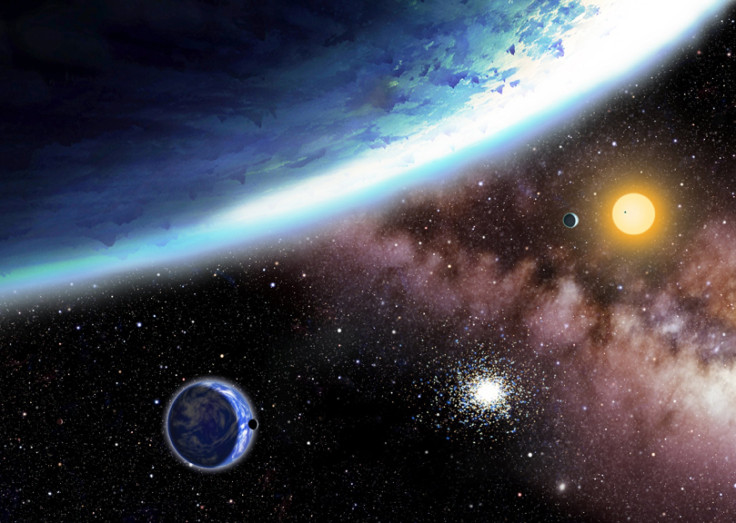1,200 Light-Years Away, Two Near-Earth-Sized Planets Might Be Hospitable To Life

About 1,200 light-years away from Earth, in the constellation Lyra, are two planets that could be the most likely place to harbor life outside our solar system.
The Kepler Space Telescope looks for exoplanets by training its eye on stars and looking for the brief flickers as planets pass in front of them. Now, Kepler scientists announced they’d found a five-planet system orbiting the star Kepler-62, which is a bit cooler, older and smaller than our sun. And two of Kepler-62’s planets stand out in particular.
“These are the best candidates found to date for habitable planets,” Kepler scientist William Borucki said at a NASA briefing on Thursday.
Kepler-62f is just 1.4 times as large as Earth, while Kepler-62e is 1.6 times the size of our planet. Both planets reside in the habitable zone surrounding their star, where it is just the right temperature for liquid water to persist – not too hot, and not too cold. Kepler-62e orbits its star every 122 days; Kepler-62f completes one circuit every 267 days.
“This is really juicy information,” Kepler project manager Roger Hunter said Thursday.
The other three planets circling Kepler-62 are likely getting baked by their star, possibly harboring liquid zinc and liquid cadmium on their surfaces, according to Borucki.
Two other confirmed exoplanets have been previously found in the habitable zones around their stars, but are much bigger than the pair described on Thursday. Kepler-22b is 2.4 times the size of Earth, while Kepler 49-c is 5 times as big.
NASA scientists think the smaller planet, Kepler-62f, might be a rocky world, while the larger Kepler-62e might be mostly covered in water. It’s still uncertain, though; while scientists know the planets’ sizes, they do not yet know their masses. Current estimates are based on previous studies of similarly-sized exoplanets.
But other researchers are thinking even more boldly. In research forthcoming in the Astrophysical Journal, researchers at the Harvard-Smithsonian Center for Astrophysics used computer modeling to predict that Kepler-62e and Kepler-62f are both completely shrouded in planet-encompassing oceans.
Such water worlds would be unlike anything in our solar system.
“There may be life there, but could it be technology-based like ours?” Lisa Keltenegger, a researcher with the CfA and the Max Planck Institute, said in a statement Thursday. “Life on these worlds would be under water with no easy access to metals, to electricity, or fire for metallurgy. Nonetheless, these worlds will still be beautiful blue planets circling an orange star -- and maybe life’s inventiveness to get to a technology stage will surprise us.”
The pair wouldn’t be the first potentially watery worlds discovered by Kepler – that honor goes to Kepler-22b, the first satellite discovered orbiting within the habitable zone of a star similar to our Sun. Kepler-22b is about 600 light-years from Earth, swinging around one of the stars in the constellation Cygnus.
“A lot of people would like to have the exact earth analogue orbiting around the exact sun analogue,” Keltenegger said at the NASA briefing Thursday. “We don’t think that’s necessary.”
© Copyright IBTimes 2025. All rights reserved.





















